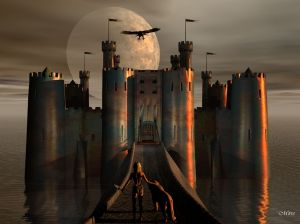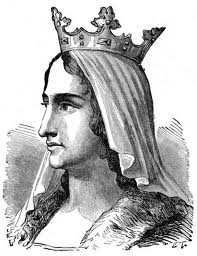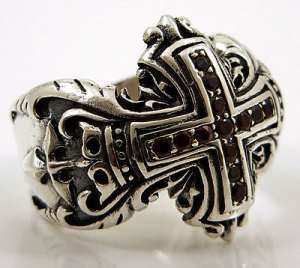Leonardo Da Vinci: The Life and Death of a Great Renaissance Master
Born: Saturday, 15 of April 1452
Died: 2 of May 1519 (aged 67)
Nationality: Italian
Profession: Inventor, painter, sculptor, architect, musician, scientist, mathematician,
engineer, anatomist, botanist, geologist, cartographer and writer.
When we think of great Renaissance masters, we think of the most unusual and intresting one, Leonardo Da Vinci. Born Leonardo Ser Piero Da Vinci, he was the
illegitimate son of a prominent notary, Ser Piero di Antonio and a peasant woman called Catrina. He was born in Vinci, Florence and spent his childhood living with his father. Both his father and his mother later had children, and supplied him with a total of 17 half brothers and sisters. Da Vinci spent his younger days outside, sketching and observing nature. As a child he had access to scholary texts owned by his family and friends, and received an informal education in his home. He was exposed to Vinci’s painting tradition, and when he was 15, his father apprenticed him to Andrea del Verrocchio (a leading artist in Vinci) This man was a goldsmith, a painter and a sculptor. He bacame his apprentice learning painting and sculpting and was accepted into the painters guild in Florence in 1462. However, he deferred and continued working as an apprentice until 1477.
When he completed his apprenticeship, he continues working as an assistant in Verroccio’s workshop. From here his earliest known painting stems, a collaboration with Verroccio called Baptism of Christ, painted in 1475.
Da Vinci was known as a Renaissance man for his many contributions to the rebirth, such as inventions, paintings, architecture, anatomical discoveries, painting techniques, and scientific discoveries.
Da Vinci invented many great machines, and notebooks have been found depicting sketches of flying contraptions, military weapons, and other machines.
In his notebooks, he also speaks of his earliest memory being when a kite(a large feathered hawk) landed in his cradle and hit his face repeatedly with it’s tail feathers.
This was his explanation for his fascination with objects that enabled a person to fly. He never constructed the blueprints he sketched for a flying machine now known as a helicopter, but his sketches aided the construction of the future helicopter. Other sketches of flying contraptions also included a glider and a parachute. The glider was the first ever plane design capable of flight.
An excellent cartographer, he aided many wars with his creation of maps. His first map was of a stronghold in Imola. He had none of the modern technology that cartographers today use, preferring to walk the distance personally, in order to measure accurately.
His contribution to military weapons included an automobile car (which was powered by a spring), a three tier machine gun, a scaling ladder, and a tank.
Da Vinci created a bronze horse, for a patron called Ludovico Sforza. 23 feet high and weighing nearly 80 tons, the giant sculpture of the Duke of Milan on horseback proved to much for even Leonardo. Sforza appointed Leonardo to create this statue as a tribute to his predecessor Francesco Sforza. By the time the French invaded Milan, Da Vinci’s had a 22 feet version made from clay, but he devised a way to make the statue from bronze. However, the original clay version was used as target practice for the marauding French army.
Da Vinci’s paintings are some of the most well known in the world.
The most famous currently resides in the Musee de Lourve, an art museum in Paris, under the title of Portrait of Lisa Gherardini, wife of Francesco del Gioconda, better known as the Mona Lisa . The simple, yet extraordinary painting has intrigued many patrons of the arts. It depicts a seated woman in front of a background of a landscape. Da Vinci started the painting, then left it for four years. He then returned to it three years later and finished it shortly before he died. The model is Lisa del Gioconda. Her smile has been described mostly as enigmatic, and has been the centre of many discussions. Many wonder how her smile seems joyful and radiant one moment and serious the next, and numerous art historians and scientists have studied her portrait carefully, all attempting to find the secret of her mysterious smile.
Another largely famous painting is The Last Supper. This mural covers the end wall of the dining room at the monastery of Santa Maria delle Grazie in Milan, Italy. The painting portrays the reaction of the apostles when Jesus tells them that one of them will betray him. It differs from other paintings of this event, as normally, Judas sits on the other side of the table alone; with his back to the viewer. In this image however, Judas sits in the midst of the apostles. He has knocked over a salt cellar, which may have referred to the Near-Eastern expression to ‘betray the salt’ meaning to betray ones master. The painting is done on a dry wall instead of wet plaster, so it is not a true fresco. Because of the methods used to paint it, the picture began to deteriorate a couple of years after Da Vinci finished it, and has since had to be restored several times, one restoration taking over 21 years. One other painting is The Adoration of the Magi.
Da Vinci’s interest in science is clearly proven in the ink and paper drawing, The Vitruvian Man, created in 1487. Also on the paper are notes based on the work of the famed architect Vitruvius. The drawing is of a male with his arms and legs apart and in two different positions, simultaneously inscribed in a square and a circle. It is based on the ideal human proportions with Geometry and is named in honour of the architect. The artwork is an example of the blending of art and science and of Da Vinci’s love of proportion. According to the accompanying text (which is written in mirror writing) it was a study of the proportions of the male human body as described by Vitruvius. An example of the proportions are:
The length of a man’s outspread arms (arm span) is equal to his height.
The distance from the hairline to the bottom of the chin is one-tenth of a man’s height.
The maximum width of the shoulders is a quarter of a man’s height.
There is no such thing as a universal set of proportions for the human body, however. Vitruvius’ statements may be interpreted as statements about average proportions.
After many successful drawings of muscles and tendons during his apprenticeship years , Da Vinci was given permission to dissect human corpses at the Hospital of Santa Maria Nova in Florence. He also dissected cows, birds, monkeys, horses, bears, and frogs, to compare their anatomy to his notes on human anatomy and skeletons. Da Vinci had over 200 pages of drawings and notes on human anatomy and the muscular-skeletal system. His drawings included muscles, tendons, sinews, the skeleton and the cardiovascular system.
The Da Vinci code is a novel written in 2003, by Dan Brown. The novel follows symbologist Robert Langdon and Sophie Neveu as they investigate a murder which leads them into the midst of a feud between the Priory of Sion and the Opus Dei over the possibility that Jesus was married to Mary Magadalene. The beginning of the novel involves a frantic search around the Lourve, searching for invisible clues on Da Vinci paintings. It is also said that Da Vinci was the leader of a secret society who knew Mary Magdalenes secret and wanted to protect it. The Da Vinci Code is a fictional novel, but is based on facts from the book Holy Blood, Holy Grail published in 1982.
The Mona Lisa is a large topic of speculation for many people. Theories have been devised, stating many extreme and strange observations. Some have proved to be correct, but others are quite literally just speculation. One of the most recent ones was that if her eyes are magnified, tiny words and numbers can be seen. Others say she was pregnant, that she originally had eyebrows and eyelashes, that she is a female version of Da Vinci, or that the painting was cut down and made smaller.
The painting of the Last Supper’s wild theories shot into the stratosphere after the Da Vinci Code, as it was indicated that evidence for Jesus’ marriage to Mary Magdalene was presented in the painting. They speak of the apostle depicted as being John is in fact Mary Magdalene, as ‘she’ has feminine clothing and hands. They also say that she was pregnant with Jesus’ child, and the space between the two in the painting is to represent the Holy Grail. They also focus on the hand with the dagger, saying that it is impossible for Peter to bend his hand in such a manner, especially as Da Vinci was so knowledgeable about anatomy. They claim the hand belongs to no one, that it was Da Vinci’s own secret. There is evidence to support some of these theories, but nothing is mentioned in Da Vinci’s notebooks so we won’t ever be really sure if any of this is true.
Da Vinci was ambidextrous, and many say he was able to write and paint at the same time.
His notebooks are all in mirror writing, and can be seen in the Royal library at Windsor Castle, the Lourve, the Biblioteca Nacional de Espana, the Victoria and Albert museum, the Biblioteca Ambrosiana in Milan and the British Library in London. The Codex Leicester is the only major scientific work of Leonardo in private hands. It is owned by Bill Gates and is displayed once a year in various cities.
Leonardo Da Vinci had a number of powerful patrons, including Medici, Ludovico Sforza, Cesare Borgia and King Francis I of France. He had, over the years, a large number of followers and pupils.
Death of the great Renaissance Master:
Leonardo Da Vinci died on the 2nd of May 1519 in Clos Luce. Legend has it that he died in the King of Frances’ arms. He was buried in the Chapel of Saint Humbert in Chateau d’Amnboise. He died peacefully, as one of the greatest and most talented humans in history.













